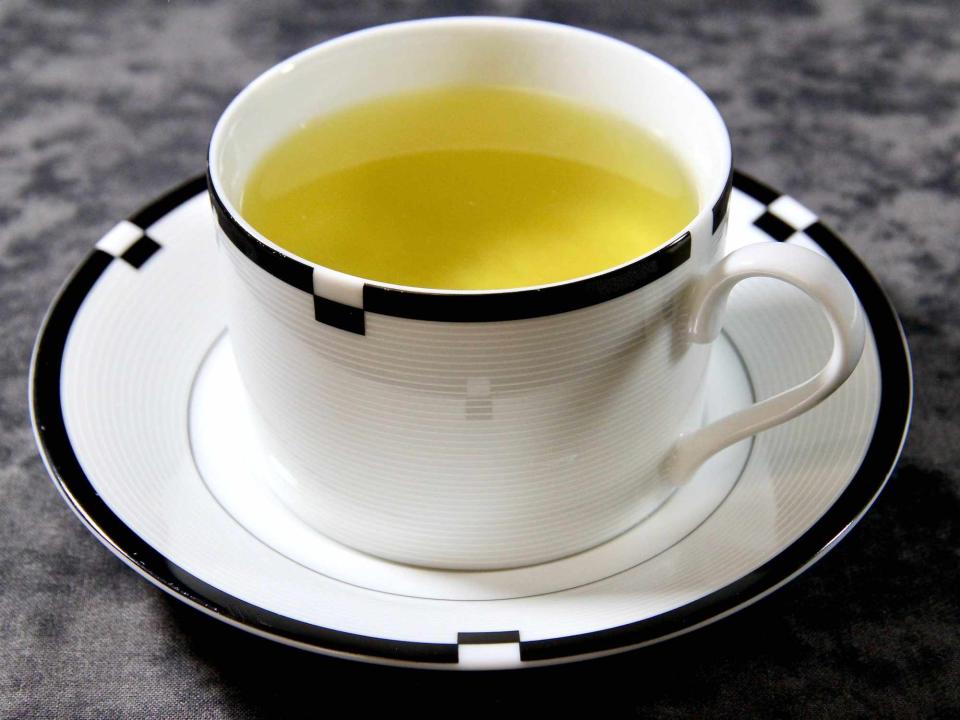Why You Shouldn't Microwave Tea
Respect the process.

I believe that tea is the ultimate comfort, just the ticket after a long day or sad news; a bright spot during trying times. Frankly, I quite admire British culture, with designated segments of the day set aside for tea.
As an avid consumer of Downton Abbey, I appreciate that, for them, tea is a whole to-do, not to mention offered immediately to anyone who walks in the door for a chat. But even with all that affection, I've still heated my water with near-reckless abandon. I use a kettle, but I pay little to no attention to the temperature, pour the water in mug, and plunk in my teabag or tea ball.
Related: What Is Chai?
Whether you're a tea technique fanatic or someone who rolls their eyes listening to people wax poetic about their leaves, brewing temperatures and flavor notes, using a microwave to heat the water just isn't acceptable.Kettles are inexpensive and readily available. Is it really that much more convenient to use a microwave?
If you say yes, it's time to burst your bubble.
Related: How to Make Tea 5 Ways
The Science Behind a Cup of Tea
With its specific types, temperatures, and brewing times, making tea can be presented as daunting or fussy, but it isn't rocket science. The method that you choose to heat the water – the majority of what a cup of tea is comprised of – is the big thing. Using a microwave isn't just bad in theory, it's literally bad scientifically.
Let's break it down:
Tea needs uniform temperature throughout your mug to brew properly – to physically get the flavor out of the bag and into the water you taste. Using a microwave makes this impossible, as uniformity isn't its strong suit. I don't think it's even in the deck.
Related: 9 Ways to Use Tea Bags — Besides Brewing a Cup
The electric field in the microwave heats from all sides and, rather than creating a uniform temperature, results your water being much hotter on top than on bottom. Think of microwaved food that seems hot, but is cold in the center.
In a kettle, the water is only heated from below, causing convection, which in science-y terms means warmer water is allowed to rise, while the colder water falls to the bottom, over and over, heating the water evenly.
How Microwaving Tea Affects Flavor
Properly warmed water for tea isn't just a hill your snobby friend or coworker has chosen to die on. It is vital to the flavor. Dried tea leaves need to unfurl and expand to brew properly. Water that is too hot brews tea at a slower rate.
It goes without saying that if you're just going to microwave the water, buying loose leaf tea is a waste of money. The flavors won't come out the same, so if you've never understood the draw, this is probably why.
Caffeine and polyphenols (the bitter parts of tea) are extremely soluble in extremely hot water. This means if your water is too hot, your tea will be bitter.
Related: Why You Should Stop Throwing Away Used Tea Bags
Dangers of Microwaved Tea
A cup of tea won't kill You, but it could severely maim. Cups heated in the microwave are more dangerous – not only may the cups be hot, the scalding water inside is more likely to jump out and scald you when the cup is moved from the box than if you'd poured it into the mug.
Not to mention, there's a real phenomenon called superheated water. This is when liquid reaches the boiling point inside the microwave without forming bubbles to indicate it, but once you agitate the water (move the mug or drop in a tea bag), it can bubble up out of the cup.
The Proper Way to Brew Tea
Many kettles these days have built-in thermometers and/or settings you can choose for type of tea, turning even the most "that's too much work" person into "this is as easy as an air fryer."
It's understandable if you don't want to drop more than $15 - $40 on a kettle. I use a standard kettle with no settings or thermometer and stick to more general, loosey-goosey measurements, aiming for 170 to 180 degrees F for green tea and 200 degrees F or higher for anything herbal, rooibos, oolong, or black.
Standard kettles whistle around 212 degrees F, making it a suitable temp for everything but green tea. I just listen for a light boiling and pull it a little before the whistle.

